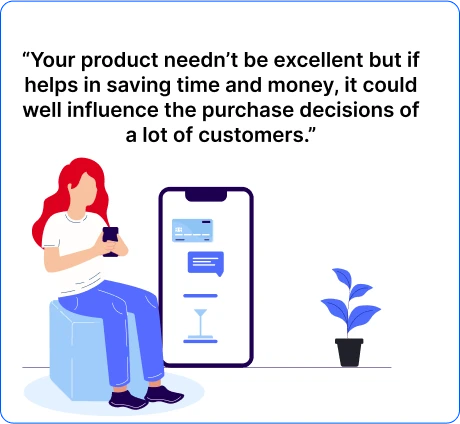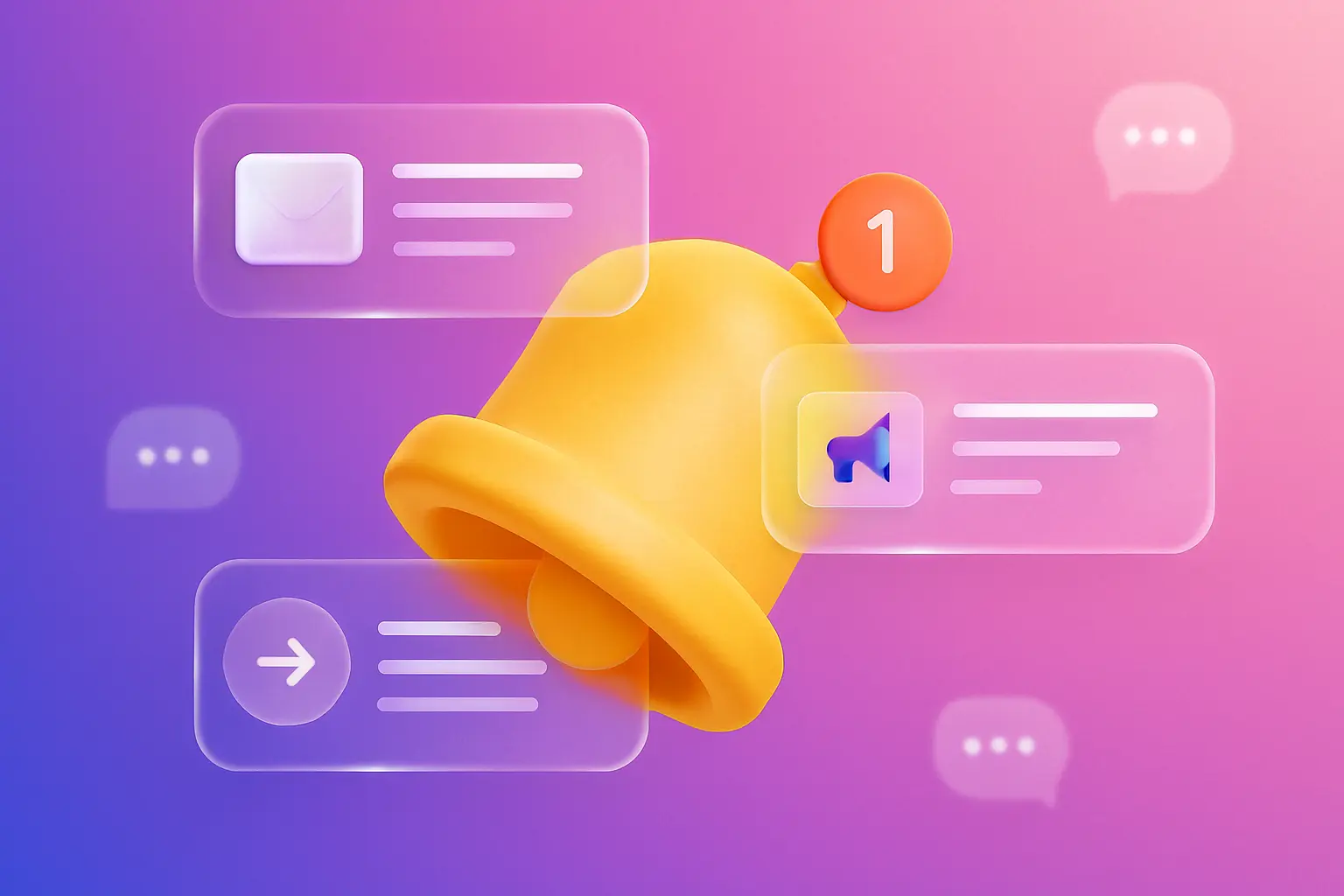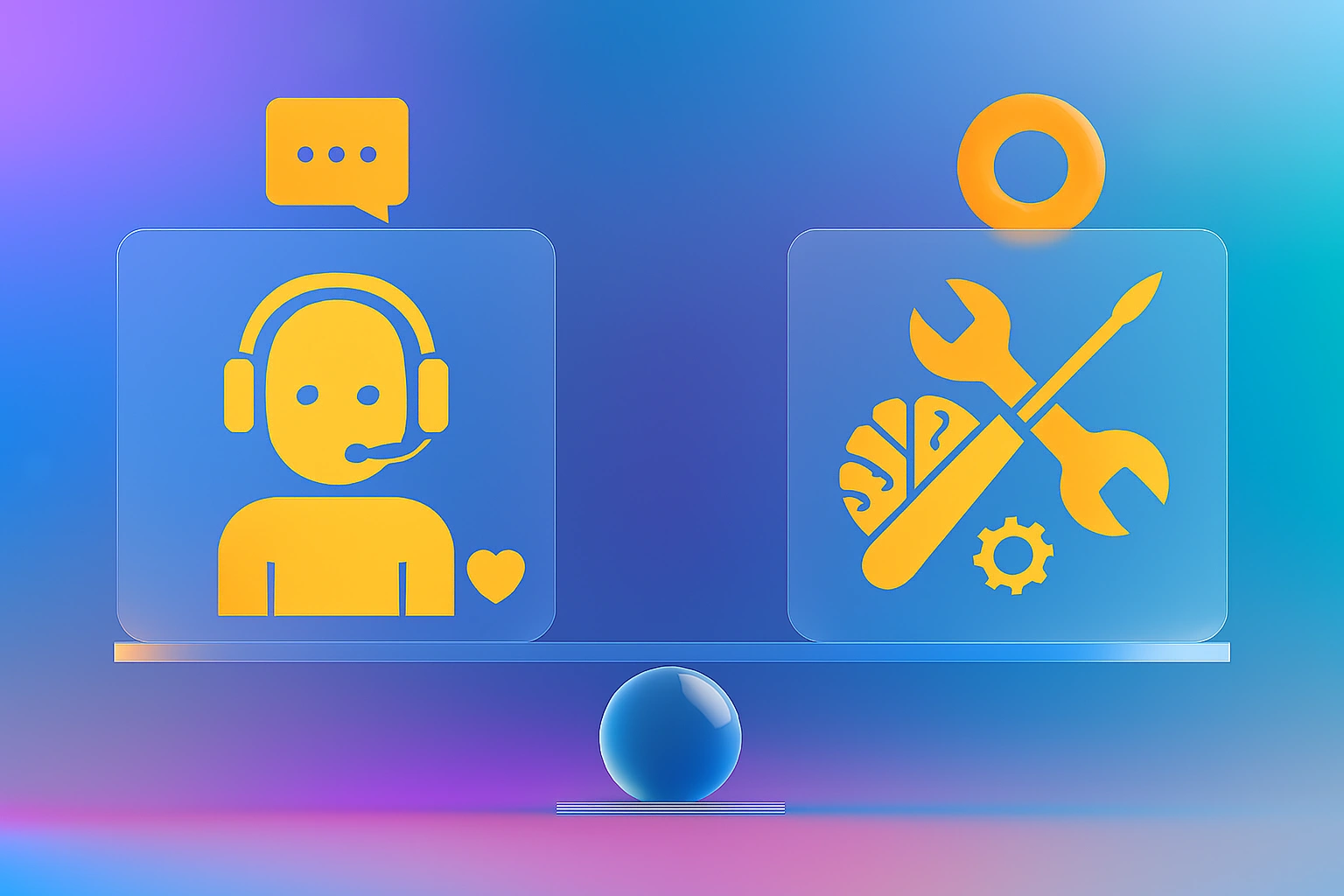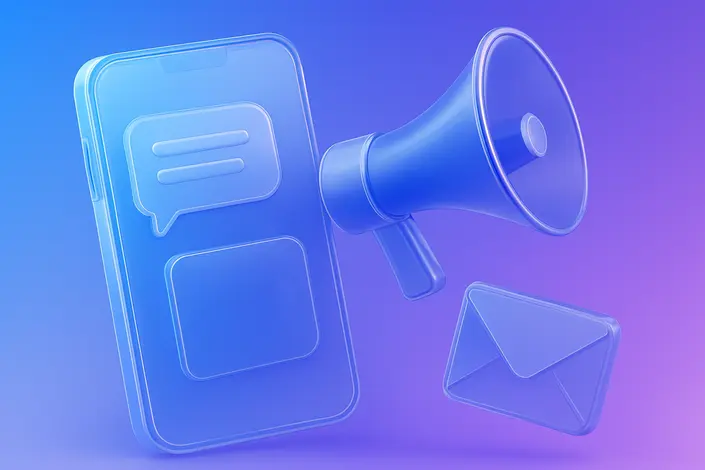What is Buying Motivation – Use These 10 Customer Motivators
- November 4, 2021
- 17 mins read
- Listen

What drives customers to make a purchase? What is their biggest buying motivation?
Well, each buyer has a unique motive. For each one of them, it could be a rational or emotional decision. Sometimes, it’s a combination of both, or of other elements.
But one thing is sure when it comes to buying decisions, customers are surely not as savvy as they might like to believe. Neither do they always make rational choices nor choose what they should. They make mistakes even if they plan and strategize long before purchasing something. Consumers often oscillate between being impulsive to staying unsure.
In most cases, they don’t know why they buy something or prefer one brand over another. But the question is, what could be the reason that influences customers when they make decisions? Emotions drive customers whatever or whenever they buy, most of the time, but there are other factors at play as well.
That’s why understanding what motivates or influences their decisions is key to success as it could help all areas of your business. And once you know what drives customers, your team can improve upon various aspects easily be it marketing, sales pitches, customer support responses, and so on.
In this blog, we will explore buying motivation in detail, understand the motives of buyers, and learn the differences between emotional and rational motivation.
Before moving further, let’s get started with the definition first…
What is Buying Motivation?
Buying motivation is simply the influence that gives the impulse to buy or purchase goods or services. It may be defined as a drive or urge or the inner state that prompts a person towards the action of buying.

When a customer has a buying motivation, he/she is driven by a hunger for satisfaction, so they act in a proper direction and take action. For a business, it’s always important to understand customer needs better to serve them well and boost sales.
Based on different customer types, a buying motivation could be of various types, be it physical, psychological, sociological, emotional, rational, conscious, dormant, acquired, inherent, primary, and selective.
Types of Buying Motives
Understanding buying motives is essential to knowing the reasons that drive consumers to make purchase decisions. They are products of various factors such as rational, emotional, or psychological. These factors may sometimes overlap and intersect based on the unique needs and preferences of the target audience.

Let’s look at different types of buying motives –
- Rational motives – These motives are based on logical considerations, or driven by logic. Consumers influenced by rational motives prioritize logical aspects such as features, functionality, price, quality, price, and utility.
- Emotional motives – These motives are based on emotions, feelings, and desires. Consumers who are influenced by emotional motives consider factors such as comfort, pleasure, and excitement.
- Social motives – Social motives are driven by factors such as status, recognition, and acceptance. Consumers who are influenced by social motives may buy things to adhere to social norms or show affiliation with a particular group of people.
- Psychological motives – These motives are based on various psychological needs consumers may experience such as security and convenience. Consumers driven by these motives may buy products or services that deliver reliability, ease of use, and safety.
- Cultural motives – Consumers who are influenced by cultural motives are driven by factors such as beliefs or traditions. Most purchases in this category are based on cultural preferences associated with products or services.
- Situational motives – These motives are driven by specific occasions. Consumers influenced by situational motives may purchase due to special events, seasonable factors, or immediate needs.
Emotional vs Rational Buying Motivations
Buying motivations are often shaped by different factors. While impulses are the biggest emotional factor that drives consumer behavior, it’s logical reasoning that makes up the biggest element of rational buying motivations.
Let’s discuss some of the key differences between emotional vs rational buying motivations –
Emotional Buying Motivations
Emotional motivations often lead buyers to make purchasing decisions based on feelings. These motivations are deeply rooted in desires and psychological needs. In various industries, emotional motivations have a big role in shaping consumer behavior and driving sales. Marketers often target these motivations through ads and aim to connect consumers on an emotional level.
Key Elements of Emotional Buying Motivations:
- Emotional buying motivations are aroused by specific triggers that evoke feelings of desire, joy, fear, or excitement.
- Emotional buying motivations arise from basic psychological needs, such as the need for belonging and self-esteem
- Buyers may develop a strong brand affinity and loyalty that stems from emotional aspects and trust.
- Past experiences and memories with the brand product or service may sometimes form the basis for emotional buying motivations.
Rational Buying Motivations
Logical reasoning drives rational buying motivations. Practical considerations associated with a purchase are also key factors involved in rational buying motivations. Such buying motivations are based on deliberate thought processes and gaining maximum value. Rational buyers are not swayed by emotions and they rather prioritize facts and evidence when evaluating options.
Key Elements of Rational Buying Motivations:
- Rational buyers often evaluate the costs and benefits of a purchase before making a decision.
- Such buying motivations are based on fulfilling specific needs or serving practical purposes.
- Rational buying motivations involve making informed decisions based on facts rather than emotions.
- Rational consumers focus on products with quality, reliability, and durability.
6Cs of Customer Motivation
Customers want value and a great experience when they play to buy something. Your business therefore should always focus on motivating them to take action as this is the only way to drive sales. It’s also equally important to be aware of customer delight, buying motivators, tastes, and preferences that can contribute in influencing their decisions.
Customers want value and a great experience when they play to buy something. Your business therefore should always focus on motivating them to take action as this is the only way to drive sales. It’s also equally important to be aware of customer delight, buying motivators, tastes, and preferences that can contribute towards influencing their decisions.

For businesses in the online world, the 6Cs of customer buying motivation include;
Content
Content can work as a motivator if it’s presented in a way to detail product information neatly and if it helps customers understand the business better at each step of the way.
Customization
Personalizing the content or products to suit specific individuals or groups can work as a great customer motivator and may also positively affect sales.
Choice
Giving customers choices at every stage of the way, whether related to products or payment methods, could work as a buying motivation.
Convenience
If customers feel a sense of convenience with your brand whether, for support or availability, this could work as a buying motivation for them.
Cost
A product that costs neither too low nor too high or a company that offers competitive prices, could well motivate the buying decision
Community
Being present across social channels and forums to answer questions or clear doubts can give customers a sense of community and may influence their purchase decision.
Benefits of Understanding Customer Buying Motivation
Understanding customer motivators and realizing what drives them is always a big challenge for businesses across industry verticals. Nonetheless, this is a challenge worth accepting because it helps put resources in a better way and target the right customer persona motivations. And when you know customer service psychology, this could always make all the difference to the bottom line.

Being aware of customer buying motivation can positively impact different aspects of the business.
- Solid brand – Businesses that are able to gauge customer buying motivation well can target people in the right way and deliver value proposition at every stage of the way, therefore creating a strong brand.
- More loyalty – Customers may be fickle in nature but they often stick with companies that understand and serve their persona motivations based on the exact motivations, therefore staying loyal to them.
- Better conversions – You can expect a better conversion rate or more sales only if you understand buying motives of consumer behavior inside out and target them with the right offers at the key juncture of their journey with your brand.
- Improved customer service – Agents can engage customers in a superior manner, answer their questions confidently and enhance the experience easily if they are aware of the drives and motivations.
Top 10 Buying Motivations that Drive Sales
Customers are always a mixed bag of both rationality and impulse. And businesses that target one and ignore the other find it hard to win loyal customers. You should not make this mistake and rather focus on first understanding customer pain points or what motivates customers and then strategizing the marketing, sales, and support accordingly.
You could drive sales and boost experience when you knew the top customer buying motivation.
- The Need of Your Product
- The Desire to Stand Out From the Crowd
- A Feeling to Belong to the World
- The Constant Wish of Self-improvement
- Achieve a Goal in Life
- Aiming for a Positive Future
- Make the Life Easier
- Save Time and Money
- A Sense of Freedom
- Security by Familiarity
Let’s discuss each of these in detail –
1. The Need of Your Product
Most customers often buy a product when they need it, not necessarily when they just want it.
So, as a business, your priority should always be on identifying the target group and then marketing the product to them so that sales can be boosted. Once you know what is consumer behavior, you can always take steps to better serve their needs.
Your aim is to convince customers that your product or service is the solution to their problem.
Similarly, you also need to present the product or service in a way that shows customers the value of owning it.

Tips to create need of your product:
- Make customers see the benefits of your product rather than focussing too much on the feature as this will increase their level of urge for the product.
- Do the research to gauge the urgency level of the customer or try to understand the dissatisfaction level before presenting the product in front of them at the right time.
2. The Desire to Stand Out From the Crowd
A lot of customers have the desire to feel unique and special in one way or the other. So much so, they can buy anything if it helps them stand out from the crowd.
Some of their purchases are purely driven by the urge to look different from the rest. That’s why they often buy random things even if they do not need them.
This also explains why people buy fancy cars, expensive watches, or avail premium subscriptions to services as this makes them somewhat special.
Considering this kind of motivation, you need to make sure your product somehow satiates different types of customers and their craving of specialness.
Irrespective of the industry you belong to, the product you sell has to create some difference to customers and also give them the edge they so richly crave.

How to target customer persona motivations to feel special?
- Personalization – You or your product needs to offer some sort of personalization to win customers over and ensure they see the desired value in it.
- Exclusiveness – If your product or service is able to drive home the point of exclusiveness to customers, it will definitely sell like a hot cake.
3. A Feeling to Belong to the World
Humans are social animals. They are always driven by a strong sense of community. For that reason, we often want to own things others have or plan to avail services purely because friends or neighbors did.
The feeling to belong to the world means customers don’t want to miss out on something that others are having. In the same way, people can buy any product that helps them feel like they are part of the community at large.
This also explains the rationale behind the en-masse purchase of items like TV, smartphone, refrigerator, vacations, etc.

How to make customers feel belonging to the world?
- Present your product in a way that gives the assumption that’s it’s owned by everyone around.
- Even if your product or service is not unique or path-breaking, you can still make it appear as if owning it gives a sense of community.
4. The Constant Wish of Self-improvement
A lot of customers are influenced by the wish to constantly improve their lives in one way or the other.
They search for products that make lives better. From acquiring new skills to getting awesome experiences, they are ready to pin hope on anything that ensures some sort of improvement.
For that reason, many businesses promote their products in a way that hints to make life better in any little way it could.
Your product too needs to take a leaf out of the ‘self-improvement’ drivel if it wants to tap into this customer motivation either for individuals or businesses.
And if you could meet customer perception of improvement, this might positively impact the sales.
5. Achieve a Goal in Life
Whether an individual or business, everyone often strives to achieve a goal and reach a milestone in life to feel a sense of accomplishment.
The desire to progress to the next level or cross a barrier has always been a huge motivator for people.

So, it’s only natural for humans to look for a product or service that helps them meet a goal and feel like having achieved something in life.
Goals are among the powerful buying motives of consumer behavior that can always work as an incentive for most, so you need to target this if you want to sell your product.
Tips to target customers aiming to achieve a goal:
- Make sure you highlight the product feature or benefits in a way that assure customers of good results if they buy it.
- You also need to present the product in a way that gives customers the confidence to achieve their goals easily.
6. Aiming for a Positive Future
Brands that open the window to a positive future often connect customers at a personal level and perform well in the market.
And when it comes to a positive future, it not necessarily means offering some high-tech products, but it may also be ensuring some hope through your own product.
Whatever product or service you have, it has to give a hint of being a contributing factor towards a brighter future for the world or customers.
If your product or service could pain a positive future, customers would definitely go for it.

Ways to depict a positive future for customers?
- Make it known to the world if you think the product is capable of impacting the future for customers in any way.
- And if your product does not have innovative features, then focus on something other, whether your mission or value, that is oriented to making the future better for customers.
7. Make the Life Easier
Customers want their lives to become progressively easier.
They often invest in products or services to get better or to see an improvement in their life.
Some of their purchasing decisions are driven by the wish to make things better or easier than before.
Quite like individuals, business entities too are influenced by this desire to go for a product that helps them make the processes better.
As a result, you need to be aware of buying persona motivations and align the products or services in a way that impacts customers at a deep level.
Tips to target customers who aim to make life easier:
- Show customers the USP of your product that can impact lives in a big way and make things easier.
- Do a bit of research and target businesses that can benefit from your features and add value to their processes.
8. Save Time and Money
No matter how rational customers are, they find it hard to avoid the lure of products that provide visible value.
For that reason, they often search for products or services that help them do the same job in less time and with less money compared to what is available in the market.

Your product needn’t be excellent but if helps in saving time and money, it could well influence the purchase decisions of a lot of customers.
And if you’re able to positively impact customer motivation, it can definitely push the sales upwards.
9. A Sense of Freedom
A lot of customers feel trapped by the harsh reality of the present. They think something is missing that prevents them from taking a leap to the next level.
People also feel tied to the same old conventions and rules with nothing new to achieve or do, and this also adds to their boredom.
This explains why people buy tour packages to give themselves a sense of freedom and be away from what is bothering them.

Even if you’re not in the tour industry or even if your product is not revolutionary in any way, it can still achieve customer happiness by targeting the desire of feeling a sense of freedom.
Freedom could be anything, be it the ability to achieve something, or do something not possible earlier, or to do things in a better way, etc.
10. Security by Familiarity
It’s natural for customers to look to align with brands that give them a sense of security.
More than the product or service itself, they want to associate with a company that provides a type of security, or that looks to add value and not just to make money.
For that reason, companies that have favorable customer policies, be it return policies, refund rules, data security features, etc. enjoy more trust in the market compared to the rest.
So, you need to target customers’ persona motivations of seeking security so that they can find you trustworthy and feel like joining with you.
Uncover Customer Persona Motivations and Improve their Experience with Your Brand
Emotion drives purchase. It motivates people to buy things. So your business should always strive to uncover customer motivations and tap into those. The focus should always be on understanding what causes buying motivation for customers to purchase something as then you can present your products at the right time and show the value it brings.
In addition, your brand value can grow manifold if you become aware of what influences customers, and you also deliver something that ensures great experiences. The idea is to know your customers well, be aware of their emotions at different stages of the journey and then target them at the right time so that sales can get a well-deserved boost.





